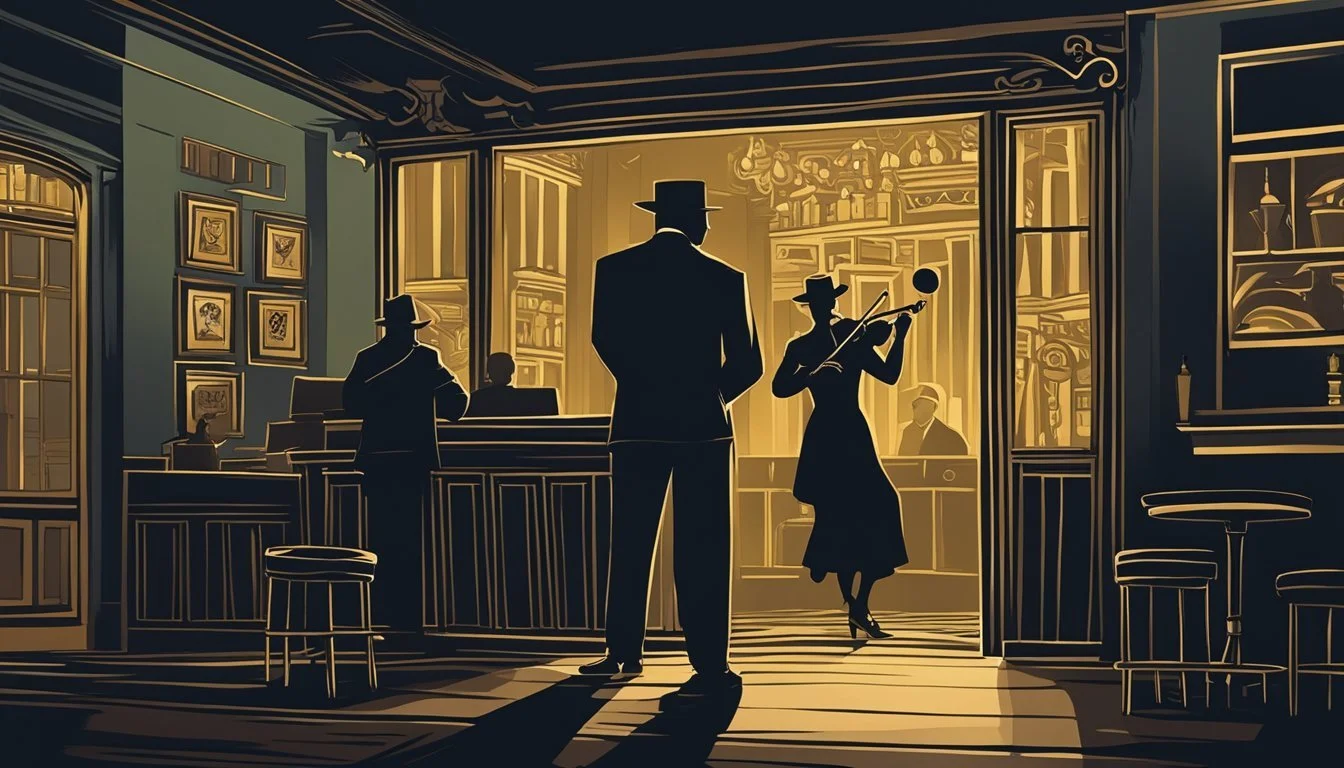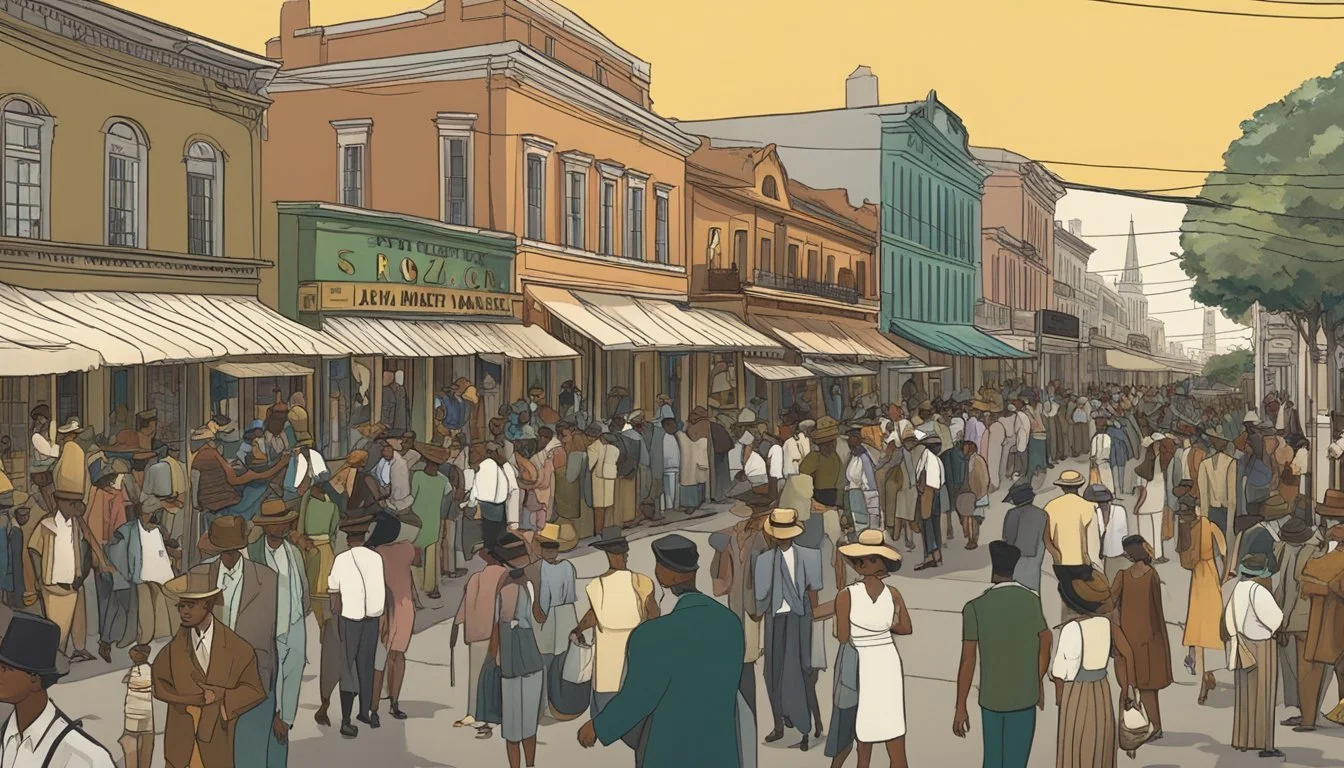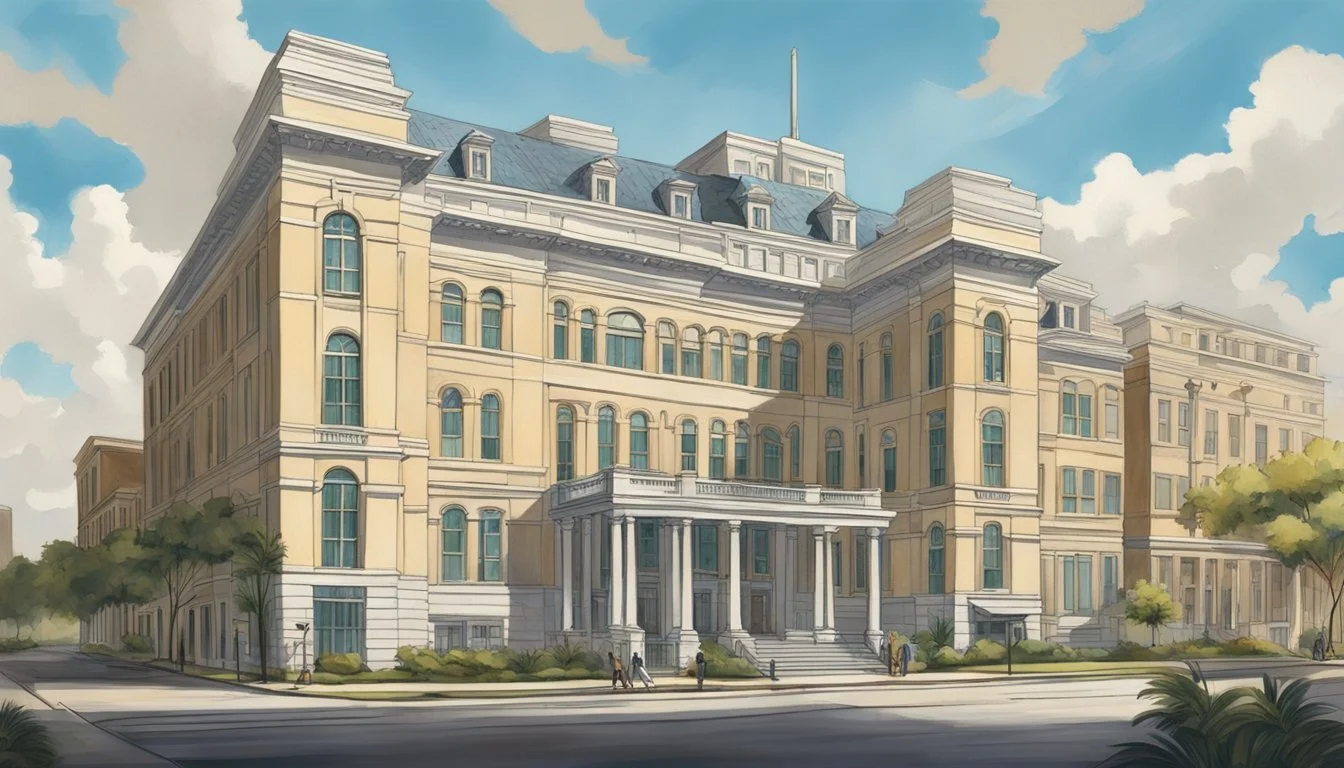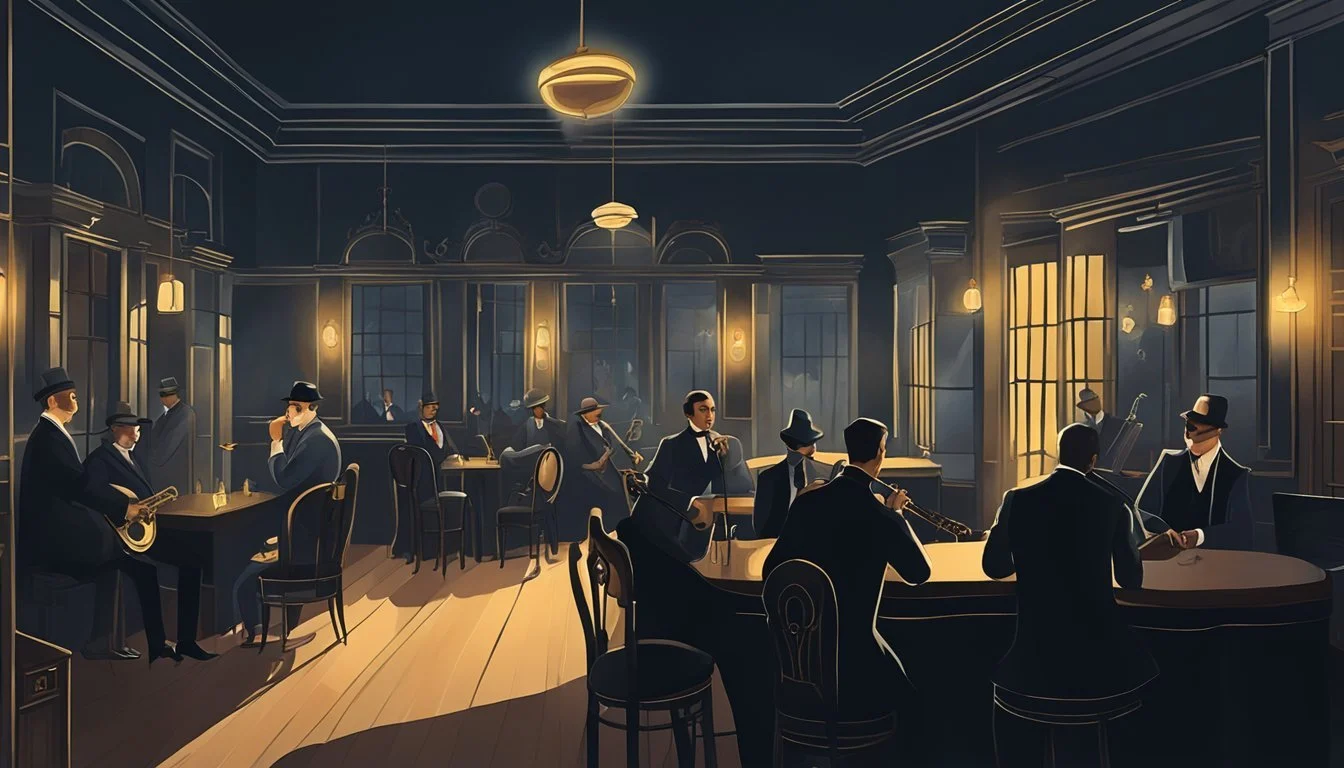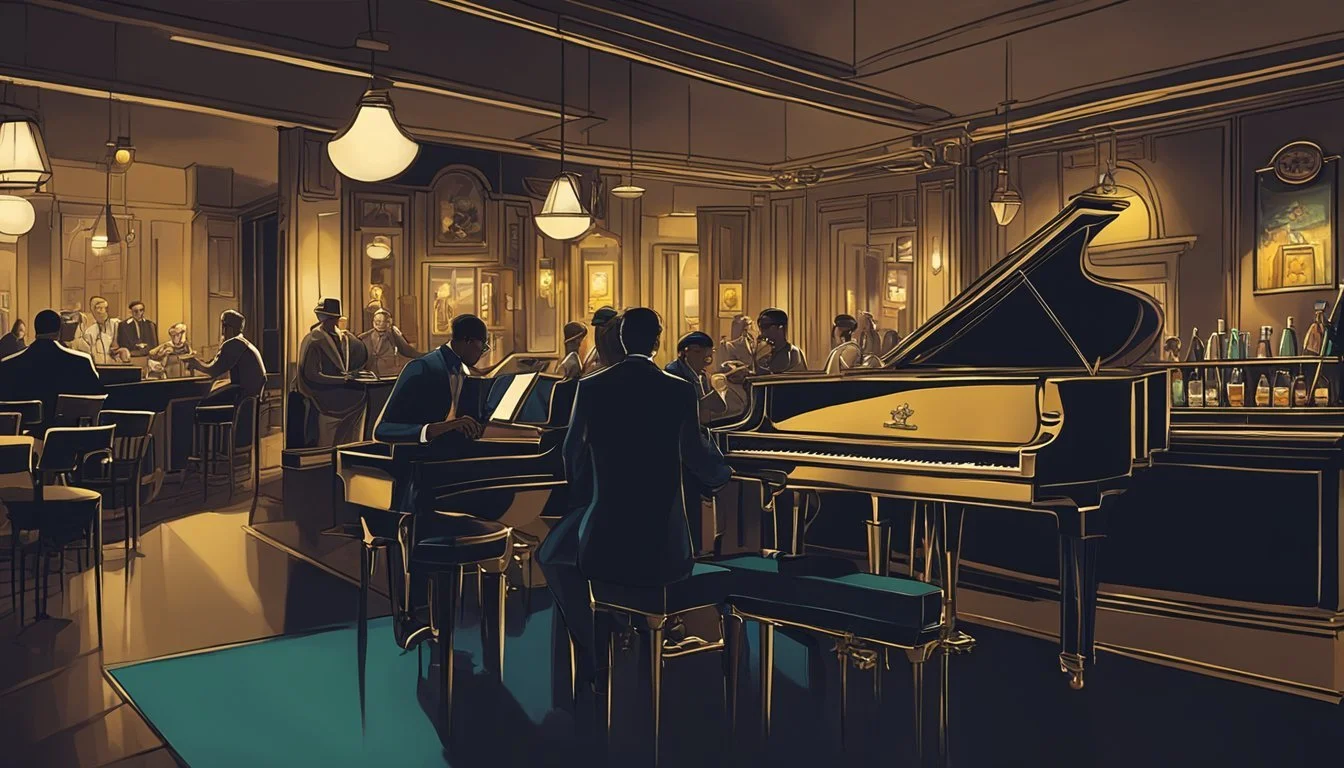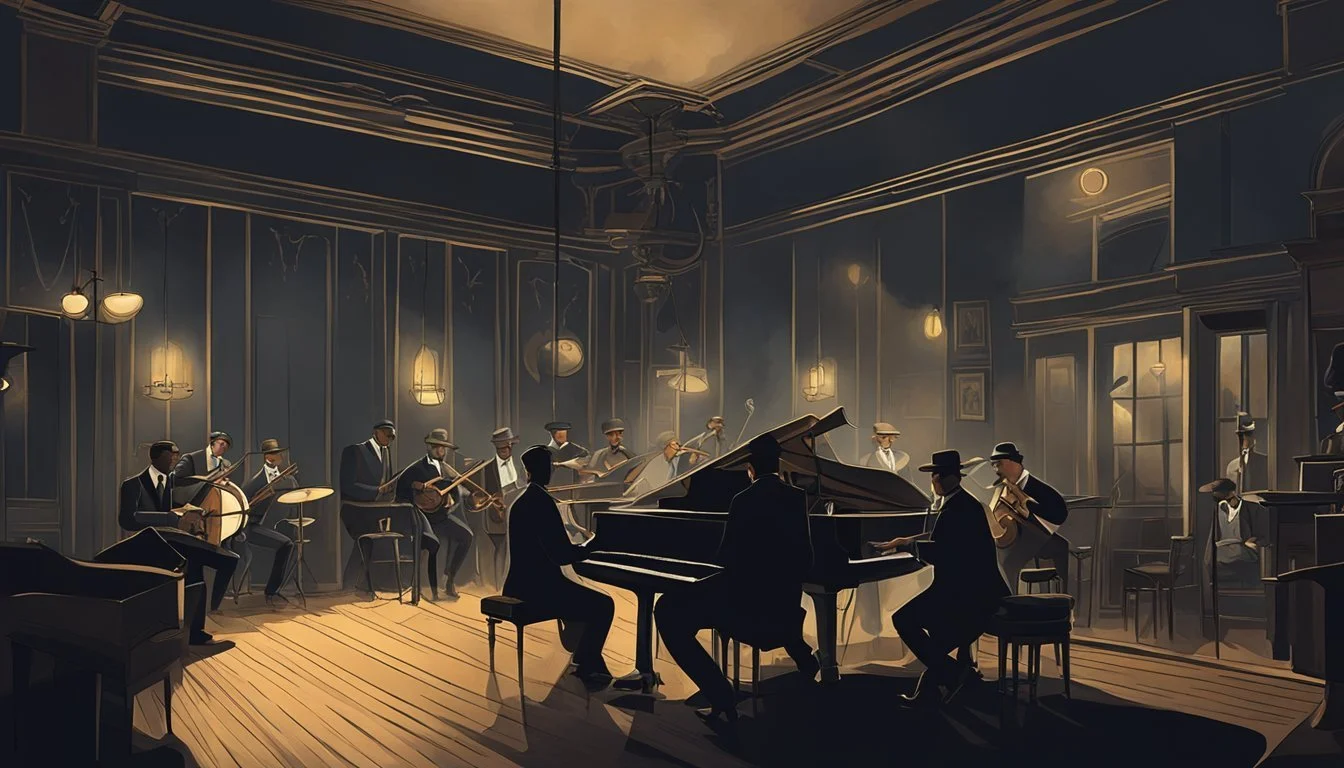Cedric Tresvant: 6 Jazz Age New Orleans Locations Linked to the Axeman
Historic Sites Connected to the Infamous Killer
The Axeman of New Orleans terrorized the city during the Jazz Age, leaving a trail of brutal murders and unsolved mysteries. This enigmatic killer captivated public attention with his chilling attacks and cryptic messages, becoming an enduring figure in New Orleans' dark history.
Six locations across New Orleans hold significant connections to the Axeman's reign of terror, offering glimpses into the investigation and the city's atmosphere during that tumultuous period. These sites provide a haunting backdrop to the unresolved case, inviting modern visitors to explore the lingering echoes of one of America's most notorious unsolved crime sprees.
1) The Italian Grocery
The Italian Grocery stood as a common target for the Axeman of New Orleans during his reign of terror in 1918-1919. These family-owned businesses, often with living quarters attached, were frequently targeted by the mysterious killer.
One such grocery became the site of a brutal attack on March 10, 1919. Joseph and Catherine Maggio, owners of a corner grocery, fell victim to the Axeman's violence that night. The couple was discovered in their blood-soaked bed, with Joseph dead and Catherine fatally wounded.
The Maggio grocery attack exemplified the Axeman's pattern of targeting Italian immigrants who ran small businesses. This focus on Italian grocers fueled speculation about the killer's motives and identity.
The grocery stores themselves became symbols of fear in the community. Many Italian business owners took extra precautions, some even playing jazz music all night in hopes of deterring the Axeman as per his infamous letter to the press.
Today, the locations of these former groceries serve as somber reminders of the Axeman's impact on New Orleans during the Jazz Age.
2) St. Roch Market
St. Roch Market, located at the intersection of St. Roch and St. Claude Avenues in New Orleans, holds a significant place in the city's history. Established in 1875, this public market building has served as a vital community hub for nearly 150 years.
The market's architecture reflects the charm of 19th-century New Orleans. Its structure has withstood the test of time, undergoing renovations in 1937-1938 and again in 2012-2015 to preserve its historical integrity while adapting to modern needs.
Today, St. Roch Market continues to be a culinary destination. It houses local food artisans who showcase their craft, offering visitors a taste of authentic New Orleans cuisine. The market operates daily, serving breakfast, lunch, and dinner.
Despite facing challenges, including a near-closure in 2023, St. Roch Market has demonstrated resilience. The commitment of vendors like CR Coffee Shops owner Kevin Pedeaux has played a crucial role in keeping this historic establishment alive.
As a testament to New Orleans' culinary heritage, St. Roch Market remains a popular attraction for both locals and tourists. It stands as a living link to the city's past while continuing to shape its culinary future.
3) Charity Hospital
Charity Hospital played a significant role in New Orleans' history, including during the time of the Axeman killings. The imposing structure opened in 1736, making it one of the oldest hospitals in the United States.
During the early 20th century, when the Axeman terrorized the city, Charity Hospital served as a crucial medical facility for treating victims of violent crimes. Its emergency room likely saw some of the Axeman's survivors.
The hospital's proximity to crime-ridden areas made it a key institution for handling trauma cases. Medical staff at Charity Hospital would have been familiar with the types of injuries inflicted by the Axeman's attacks.
Charity Hospital continued to serve New Orleans for decades after the Axeman's reign of terror. However, Hurricane Katrina severely damaged the building in 2005, leading to its closure.
In recent years, plans have emerged to renovate the historic Charity Hospital building. This redevelopment aims to preserve its architectural significance while adapting the space for new uses.
4) Tremé
Tremé holds a significant place in New Orleans history as one of the oldest African American neighborhoods in the United States. Established in 1812, it became an official part of New Orleans shortly after the city acquired the land.
The area has long been a cultural hub, known for its rich musical heritage and vibrant community. Jazz, blues, and brass band traditions flourished in Tremé, contributing to the city's unique sound.
During the Jazz Age of the 1920s, when the Axeman terrorized New Orleans, Tremé was already a well-established neighborhood. Its streets and gathering places likely buzzed with discussions about the mysterious killer.
While no specific Axeman attacks were recorded in Tremé, the neighborhood's proximity to other targeted areas meant residents were undoubtedly on high alert. The community's strong bonds may have provided some sense of security during this tense period.
Today, Tremé continues to be celebrated for its cultural importance. The HBO series "Treme" has brought renewed attention to the neighborhood, showcasing its resilience and artistic spirit.
5) French Quarter Residences
The French Quarter of New Orleans played a significant role in the Axeman's reign of terror. Cedric Tresvant, a fictional detective investigating the case, focused much of his attention on this historic neighborhood.
Several residences in the area were targeted by the mysterious killer. These attacks created a climate of fear among the Quarter's inhabitants, many of whom were Italian immigrants.
The narrow streets and closely packed houses of the French Quarter made it an ideal hunting ground for the Axeman. The neighborhood's unique architecture, with its wrought-iron balconies and hidden courtyards, provided ample opportunities for the killer to strike and disappear.
Tresvant spent countless hours canvassing the area, interviewing residents and searching for clues. He paid particular attention to the homes of grocers and their families, as they seemed to be the Axeman's preferred targets.
The detective's investigation led him to several notable residences, including a few jazz clubs that doubled as boarding houses. These establishments became key locations in Tresvant's hunt for the elusive killer.
6) 1918 Cafe & Bar
The 1918 Cafe & Bar stands as a modern tribute to the Jazz Age era that shaped New Orleans. Located in the heart of the French Quarter, this establishment recreates the atmosphere of a 1918 speakeasy.
The cafe's decor features vintage photographs and newspaper clippings related to the Axeman of New Orleans. Patrons can sip cocktails named after key figures and locations from the infamous case.
Live jazz performances are a nightly occurrence at 1918 Cafe & Bar. The music serves as a reminder of the Axeman's alleged fondness for jazz, which played a role in the killer's cryptic letter to the people of New Orleans.
While not directly connected to the original Axeman case, the 1918 Cafe & Bar keeps the history alive. It offers visitors a unique opportunity to step back in time and experience the ambiance of Jazz Age New Orleans.
The cafe also hosts occasional lectures and discussions about the unsolved Axeman murders. These events attract true crime enthusiasts and history buffs interested in this dark chapter of New Orleans lore.
Historical Background of Cedric Tresvant
Cedric Tresvant emerged as a significant figure in New Orleans during the Jazz Age. His life and career intertwined with the city's vibrant music scene and cultural landscape of the early 20th century.
Early Life and Career
Cedric Tresvant was born in 1898 in the Tremé neighborhood of New Orleans. He grew up surrounded by the sounds of jazz and blues that permeated the streets. At age 12, Tresvant began learning the trumpet, quickly showing a natural talent for the instrument.
By his late teens, Tresvant was performing in local clubs and speakeasies. His unique style blended traditional New Orleans jazz with innovative improvisations. In 1920, he formed his first band, The Crescent City Five, which gained popularity for their energetic performances.
Contribution to Jazz Age New Orleans
Tresvant's influence on the New Orleans music scene grew rapidly in the 1920s. He introduced new rhythmic patterns and harmonic structures that pushed the boundaries of traditional jazz. His compositions, such as "Bayou Blues" and "Magnolia Nights," became local hits.
Tresvant also played a key role in promoting jazz to wider audiences. He organized outdoor concerts in Congo Square and helped establish the first jazz radio program in the city. His efforts contributed to the preservation and evolution of New Orleans jazz during a crucial period in its development.
The Axeman of New Orleans
The Axeman terrorized New Orleans from 1918 to 1919, committing a series of brutal murders that gripped the city with fear. This unidentified killer left a lasting impact on local culture and became inextricably linked with jazz music.
Crimes and Investigation
The Axeman struck between May 1918 and October 1919, killing six people and injuring six more. His victims were primarily Italian-American grocers, attacked in their homes with an axe. The killer's modus operandi involved breaking into residences by chiseling out door panels.
Law enforcement struggled to identify the perpetrator. Suspects included Frank Mumphrey, but no conclusive evidence was found. The investigation was hampered by limited forensic techniques of the era.
The Axeman's most infamous act was sending a letter to local newspapers. He claimed he would spare anyone playing jazz music on a specific night, March 19, 1919.
Impact on Local Culture
The Axeman's crimes and bizarre jazz ultimatum deeply affected New Orleans society. His letter sparked a city-wide jazz party on the specified night. Dance halls were packed, and both amateur and professional bands played in homes across the city.
The killer's connection to jazz music became a defining feature of the case. It solidified the genre's place in New Orleans culture and folklore.
The Axeman's reign of terror also heightened tensions within the Italian-American community, as they were disproportionately targeted. This led to increased suspicion and fear among residents.
The unsolved nature of the crimes has kept the Axeman's legend alive for over a century. His story continues to inspire books, documentaries, and discussions about New Orleans' dark history.
Jazz Age New Orleans
New Orleans in the 1920s vibrated with musical innovation and cultural ferment. The city's unique blend of cultures and sounds gave birth to jazz, which quickly spread from local clubs to national prominence.
Music Scene and Influences
African, Caribbean, and European musical traditions converged in New Orleans, creating a fertile ground for jazz. Brass bands, ragtime, and blues fused into a new, improvisational style. Key figures like Louis Armstrong, Jelly Roll Morton, and King Oliver emerged from this scene.
Local neighborhoods like Storyville and Tremé became hotbeds of musical creativity. Street performances and second-line parades added to the city's lively soundtrack. The closure of Storyville in 1917 pushed many musicians into mainstream venues, accelerating jazz's spread.
Notable Venues and Events
Preservation Hall, opened in 1961, became an iconic jazz venue, preserving traditional New Orleans jazz. The French Quarter's numerous clubs hosted nightly performances, attracting both locals and tourists.
Popular spots included:
Pete Lala's Café
Funky Butt Hall
Economy Hall
Annual events like Mardi Gras incorporated jazz, cementing its place in New Orleans culture. The city's port brought international influences, further enriching the musical landscape.
By the late 1920s, New Orleans jazz had gained national recognition, with local musicians touring and recording in Chicago and New York.

